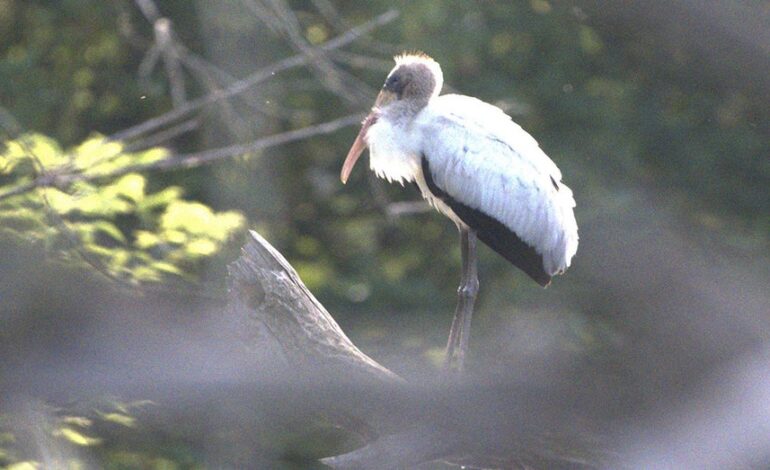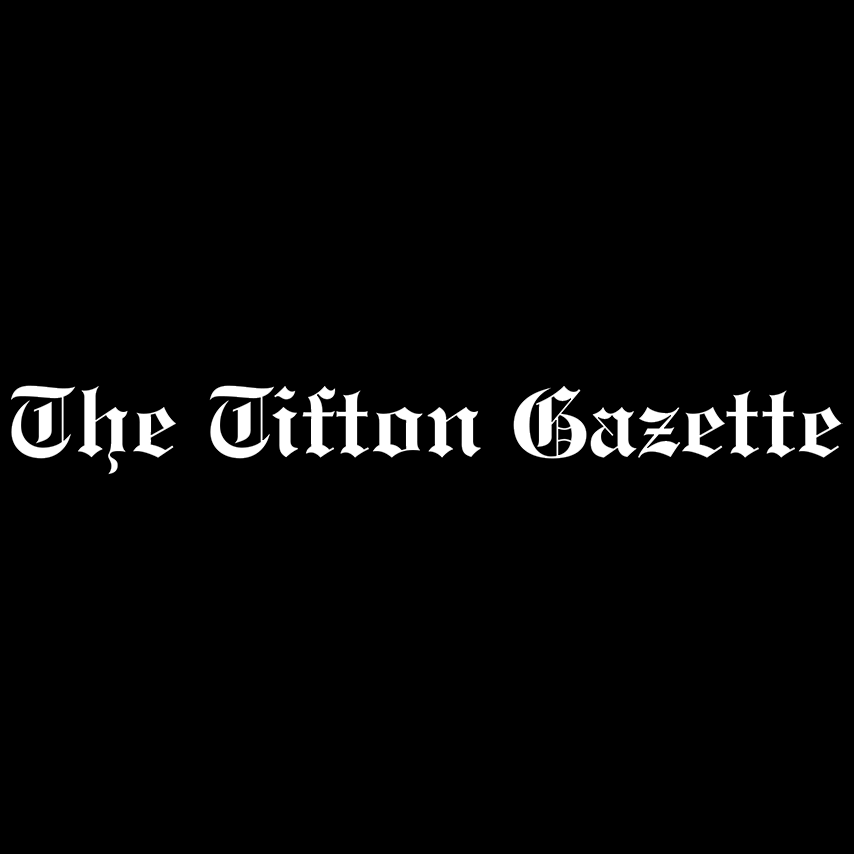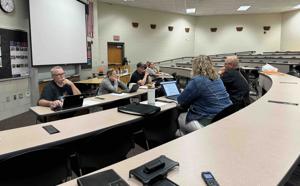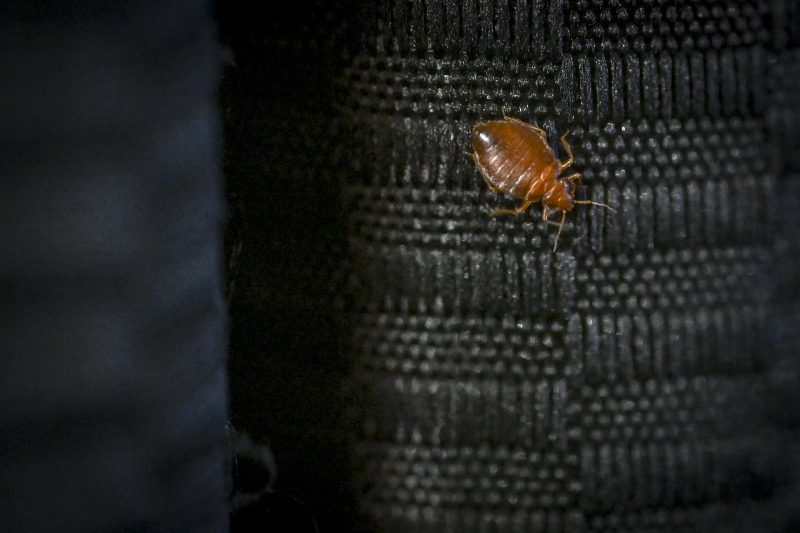Rare Wood Stork Spotted 1,000 Miles From Home in Wisconsin

BREAKING: A rare wood stork has been spotted in Wisconsin, approximately 1,000 miles from its typical habitat, alarming wildlife experts. This unexpected sighting comes as the bird, typically found in Gulf Coast states and Central and South America, may have gotten lost during migration.
The juvenile wood stork was first observed last Sunday in the Mud Lake Wildlife Area of Columbia County, northeast of Madison, while a deer hunter was in the area. Jeff Bahls, President of the Horicon Marsh Bird Club, confirmed the sighting. “It’s always fascinating where these birds come from and where they end up,” Bahls stated.
On Monday, Bahls personally verified the sighting, noting the bird’s light-colored bill, indicating it likely hatched this spring. Young wood storks often wander in search of territories during summer, making this rare sighting particularly intriguing.
The wood stork, listed as threatened under the Endangered Species Act, has seen a remarkable recovery since the 1970s when fewer than 5,000 nesting pairs existed in the U.S. Today, that number has surged to over 11,000 pairs, according to the Center for Biological Diversity. However, ongoing habitat destruction and climate change continue to threaten their population.
This specific wood stork was last seen on Tuesday flying northeast alongside a flock of pelicans, raising hopes for its safe return to more familiar territory.
Stephanie Kurose from the Center for Biological Diversity emphasizes the importance of protecting wetlands for the stork’s survival. “The wood stork has made a remarkable comeback, but wetland destruction from urban sprawl still looms large over the species,” Kurose warned.
As wildlife enthusiasts monitor this rare bird’s journey, its appearance in Wisconsin serves as a stark reminder of the challenges faced by migratory species today. Efforts must continue to ensure the protection of their habitats to sustain this hard-fought success.
Stay tuned for further updates on the wood stork’s movements and ongoing conservation efforts.






